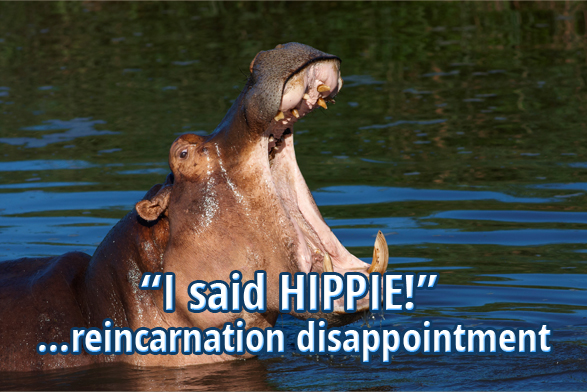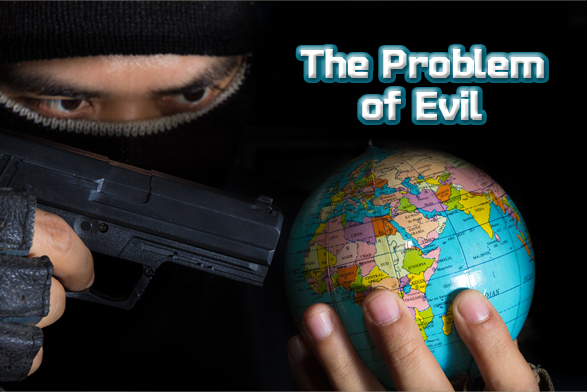What really fell from the Roswell sky
Originally printed in the Albuquerque Tribune, 8 July, 2000
[This article was formerly online at http://www.abqtrib.com/archives/opinions00/070800_roswell.shtml ]
Forget aliens and a flying saucer. The Roswell Incident was a physics experiment from Alamogordo that went awry, says the president of New Mexicans for Science and Reason.
By Dave Thomas, nmsrdaveATswcp.com(Help fight SPAM! Please replace the AT with an @)Special to The Tribune
The Roswell Daily Record started a legend: “RAAF (Roswell Army Air Field) Captures Flying Saucer On Ranch In Roswell Region.”
Roswell news and government officials were bombarded by inquiries from all over the world. Had one of those mysterious “flying disks” from outer space finally been recovered?
According to many UFO authors, nothing less than a spacecraft piloted by intelligent extraterrestrial beings was the star of that show. Most popular depictions of aliens attribute the little gray men with the large black eyes as hailing from Roswell. It’s everywhere you look — “The X-Files” TV series, the movie “Independence Day,” Fox’s Generation-X-traterrestrial teen drama “Roswell,” Showtime’s “Roswell” movie and any number of cable-TV documentaries.
The story usually goes like this: It was a dark, stormy night in Roswell, around the Fourth of July weekend of 1947. An alien spaceship crashed on a ranch near the southeastern New Mexico town. A local rancher came across the wreck and took some of the debris to the sheriff, who brought in the Army Air Force in Roswell.
Maj. Jesse Marcel decided to accompany the rancher back to the site. After collecting some curious-looking debris with strange “alien” hieroglyphic markings, Marcel returned to the base. The Army Air Force announced the recovery in a news release.
Soon after, Marcel flew to Fort Worth, Texas, to show the material to Gen. Roger Ramey. But Ramey brought out a crummy old weather balloon and radar target for photographers, and tales of the cosmic cover-up began.
That wing of the story holds that, while the world placidly accepted the “flying saucer” as just a weather balloon, the government whisked the real alien ship and bodies (and, perhaps, even a living alien) to Wright Field in Ohio.
By studying the aliens’ technology there, humans learned about lasers, integrated circuits and the like. President Truman formed a top-secret science commission to handle all matters alien, called “Majestic 12.”
And now the aliens are living peaceably underground in Area 51, helping the United States reverse-engineer even more new gadgets. But the government has successfully and ruthlessly suppressed any official release of any information regarding these Earth-shaking events for more than five decades.
Or so the story goes.
What really happened in Roswell
Something fell from the sky and landed near Roswell in the summer of 1947. But it didn’t come from outer space. It came from . . . Alamogordo!
In fact, the legend of Roswell can be traced directly to a series of top-secret physics experiments designed to spy on Soviet nuclear tests.
The real story of the Roswell Incident actually begins on Aug. 27, 1883, the day that the Indonesian volcano Krakatoa blew its top with a blast literally heard around the world. Time-of-flight analyses were performed on the volcanic rumbles for several different cities, and it turned out that the sound waves must have traveled in very cold air — such as can be found 50,000 feet up, between the troposphere (the lower atmosphere, where we live) and the stratosphere (the upper atmosphere).
Indeed, that part of the sky acts as a natural wave guide for very loud sounds, such as are produced by volcanoes — or by nuclear bombs.
In the days after World War II, U.S. scientists were rightfully concerned about the Soviets getting The Bomb. Desperate for a way to monitor possible Soviet bomb tests, the scientists began Project Mogul, with the goal of using high-altitude microphones to triangulate the positions of bomb tests. Mogul was the secret name for the program, which involved getting the microphones placed in the upper atmosphere for long periods of time.
That turned out to be very difficult. At night, for example, it gets cold, and normal balloons drop like stones.
And so it was that an unclassified part of the program, “Constant-Level Balloons,” was carried out by graduate students from New York University. The first launches of the elaborate microphone-carriers — long trains of balloons, radar reflectors and parachutes — were done on the East Coast. They failed miserably.
The project moved to Alamogordo.
Charles B. Moore, a New Mexico Institute of Mining and Technology professor emeritus of physics, was then one of those NYU graduate students. He has made public many of his recollections of those days.
The NYU group’s first launch from Alamogordo, on June 4, 1947, was lost somewhere around Arabela, N.M. “Chase crews” in those days didn’t fly jaunty pickup trucks but flew B-17s that followed the balloon trains, listening for data.
The complex, 600-foot-long assemblage of Flight No. 4 included two dozen balloons, three radar reflectors, some parachutes and black boxes. The reflectors were shaped like jacks — eight-sided structures made of balsa wood and tough, shiny, metallic-coated paper. A toy company in Manhattan made them on the side, and the company chose a curiously decorated tape to reinforce the reflectors.
Moore launched hundreds of these targets and marveled time and again at the unknown purpose of the strange hieroglyphic-like markings on the reflectors.
Ten days after the June 4 launch, rancher Mac Brazel came across a field strewn with remnants of balloons and bits of metallic foil — almost certainly the remains of NYU Flight No. 4. Ten days after that, on June 24, pilot Kenneth Arnold reported a sighting of strange flying objects that “skipped like saucers.”
This event plunged the nation into a brief but intense “flying disk” craze, with frantic new reports of sightings of the “disks” coming every day. There was even a total of $3,000 offered for the recovery of a real disk. For weeks, the story was every bit as intense as the modern-day media frenzies about Monica or Elian.
(And has anyone noticed that switching the “a” and “e” in “Elian” produces “Alien”? Just what is the government not telling us?)
It was in this atmosphere, after the Fourth of July weekend of 1947, that rancher Brazel decided to take some of that strange material to the sheriff, who took it Maj. Marcel. But Marcel’s expertise was in making assessments of bomb damage from aerial photographs. He had never seen a radar reflector; the only time one like it had ever been used previously in New Mexico was to measure winds aloft before the first atomic blast at Trinity Site in 1945.
The unusual flexible metal paper, and especially the strange hieroglyphic-like symbols, probably combined with the national “Flying Disk” frenzy to convince Marcel that this was, indeed, a real “flying disk.”
And so it was announced by the Roswell Army Air Force Intelligence Office (Marcel’s group) in a press release on July 8, 1947.
When Gen. Ramey heard of this turn of events, he called for the materials and Marcel to be flown out to Fort Worth that very afternoon.
This was done, and Ramey called down his weather officer to look at the debris. This man, Irving Newton, was excited to see a real “flying disk” for himself. That is, until he walked in to the room to see what he promptly told Ramey was simply a radar target and some old weather balloons.
The general held a press conference shortly afterward, and Roswell’s 15 minutes of fame were over. At least, they were over for three decades.
Then the story gets better
In the late 1970s, the Roswell legend emerged as the best-accepted UFO case of them all.
Marcel was interviewed and declared that the materials were “not of this Earth.” Stories of government harassment and strange materials began to surface; the legend grew.
Ten years after that, after Marcel and Brazel had died, the stories began to include the mention of alien bodies and autopsies and such.
The 90s became the Decade of Roswell, and the incident has assumed UFOdom’s “best case” mantle.
The city of Roswell is doing very well at generating income from the annual Roswell UFO celebrations, one of which wraps up this weekend. That’s not a bad thing — some towns have potato festivals; others have alien festivals.
It is ironic, though, that all the fuss is about a lost physics experiment.
Project Mogul was never successful in its primary goal, and other methods were eventually adopted to track Soviet nuclear activity. The Air Force didn’t even put Mogul flights together with tales of the Roswell Incident. That connection was first realized by UFO researcher Robert Todd and was independently discovered by Placitas writer Karl Pflock. Todd contacted Charles Moore, who told the Air Force about it, and subsequent research clinched the connection.
But many people have never heard the rational explanation for Roswell. You probably wouldn’t know it from watching television, because the Mogul explanation is only mentioned rarely and then usually in a casual dismissal.
The sound bites that UFO promoters throw out in their encouragement of belief in alien visitation have all been answered but to no avail. I heard one UFO proponent exclaim that “those scientists wouldn’t know a UFO if it landed on their head!”
That sounds nice, but it’s really a clever bit of spin that covers up the fact that, in more than 50 years of blurry photographs and conflicting stories, not one UFO has ever landed on a scientist’s head. Not one clearly alien tool or tissue sample has ever been provided for study. Not one. There have been candidates, to be sure, but these have invariably turned out to be hoaxes or of undocumented origin (as we’ll soon see).
Another commonly voiced objection to the Mogul explanation concerns Marcel’s expertise. How could a major in the only nuclear-capable wing of the Air Force mistake a silly weather balloon for a spaceship? The fact of the matter is that Marcel never said it was a “spaceship.” In a 1979 interview, he did say: “I believe it was nothing that came from Earth. It came to Earth but not from Earth.”
That sound bite figures prominently in UFO documentaries and books. Too bad they don’t tell you the rest of the story, such as Marcel’s response to reporter Bob Pratt’s query: “This was obviously no rocket?” Marcel answered: “Oh, no. Unh unh. I’ve seen rockets sent up at the White Sands testing grounds. It definitely was not part of an aircraft, nor a missile or a rocket.”Similarly, rancher Brazel is quoted in the July 9, 1947, Roswell paper as saying “I am sure what I found was not any weather balloon.” But only rarely do you get to hear other comments Brazel made in that same interview, describing the debris as rubber strips, tinfoil, tough paper, tape with flowers printed on it, and sticks, maybe weighing 5 pounds altogether.
Almost all Roswell believers claim that the famous pictures of Marcel, Ramey and Newton with the “UFO debris” show only the radar targets and material brought in as a cover-up, while the real UFO material was whisked away. But there’s a problem with that scenario, as well.
Irving Newton, Ramey’s weather officer, said: “While I was examining the debris, Major Marcel was picking up pieces of the target sticks and trying to convince me that some notations on the sticks were alien writing. There were figures on the sticks lavender or pink in color, that appeared to be weather-faded markings with no rhyme or reason. He did not convince me these were alien writings. . . . I was convinced at the time that this was a RAWIN target and remain convinced.”
The problem is this: If the target was brought in as a cover-up, which Marcel would certainly realize, then why would the poor major, humiliated by having to have his picture taken with the fake target, try to convince Newton that the cover-up “debris” seemed to have alien hieroglyphics?
The trouble with little gray men
Roswell has generated little in the way of solid evidence but has been indirectly responsible for a long string of hoaxes and forgeries.
A supposed fragment of the Roswell spaceship surfaced in 1996. The fragment was tested at New Mexico Tech and at Los Alamos National Laboratory, and was found to be copper and silver in normal (terrestrial) isotopic abundances. Then it turned out that the “fragment” was just a piece of scrap from the work of Utah artist Randy Fullbright.
Fullbright used a Japanese technique of layering copper and silver, producing a strange-looking layered metal. Someone snatched a piece of the scrap and gave it to an innocent man about to move to Roswell, telling him that it actually came from the Roswell ship and to take it to the UFO museum there.
A second “fragment” emerged at the 1997 Roswell festival, but this one failed some basic science requirements. The Internet report on the analysis of this fragment included measurements of materials so radioactive they wouldn’t last a week, much less 50 years. This episode ended with the general realization that it is indeed possible to whip up alien-looking alloys in the lab, given access to pure isotopes.
In addition, there is the case of the MJ-12 (Majestic 12) papers, purportedly describing the top-secret alien analyses of a dozen top scientists appointed by Truman. But Phillip Klass, the Washington, D.C., publisher of Skeptics UFO Newsletter, has showed that Truman’s signature on a key MJ-12 document had been photocopied from a non-UFO-related Truman letter.
A host of other problems plague the MJ-12 documents, but that doesn’t stop new ones from coming out.
Then there’s the sad tale of Penthouse magazine, which paid a huge sum for a photograph of the Roswell “alien” for its September 1996 issue. The image turned out to be a fuzzy photograph of the plastic alien prop in the UFO Museum in Roswell.
Perhaps the biggest Roswell hoax of all is the “Alien Autopsy” film, which Fox-TV producers aired twice before debunking the film themselves in a third special.
Why does it matter? What could it hurt? Is belief in aliens harmful?
I have no problem with speculation about life beyond our tiny planet or with generating needed income with a twist on the traditional small-town festival.
As a boy, I idolized Capt. Kirk and Mr. Spock, and watched every bug-eyed alien on the “Outer Limits.” Nowadays, I help with the search for extraterrestrial intelligence by letting my computer run the Setihome screen saver.
The problem, however, arises when the line between curious speculation and unsupported belief is crossed. The Heaven’s Gate cult seized on a typical Internet story, this one about a “mothership” companion to the Hale-Bopp comet and believed it, even after telescopes the group bought refused to reveal the mothership. (They returned the telescopes as defective.)
Unsupported belief can be deadly if it makes you do dangerous things, such as the Heaven’s Gate suicides made in hopes of joining the mothership, or avoid doing safe things, like shunning mainstream treatment for cancer in favor of shark cartilage. (Shark cartilage has not been shown to reduce cancer, and a recent report confirmed that sharks do get cancer, contrary to the popular belief they don’t.)
Roswell can be a lot of fun. So have fun. But don’t believe everything you hear about it!






